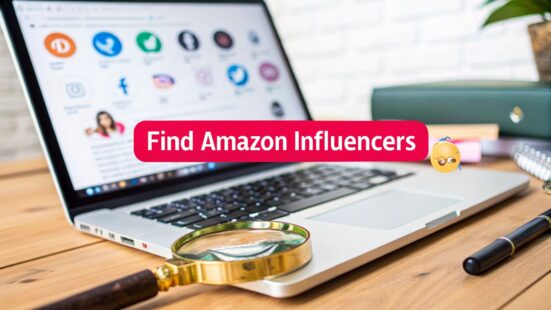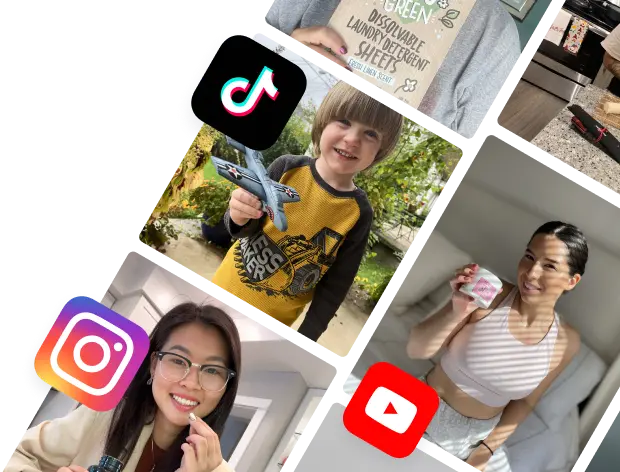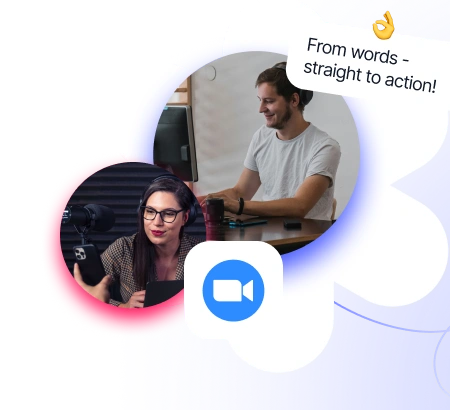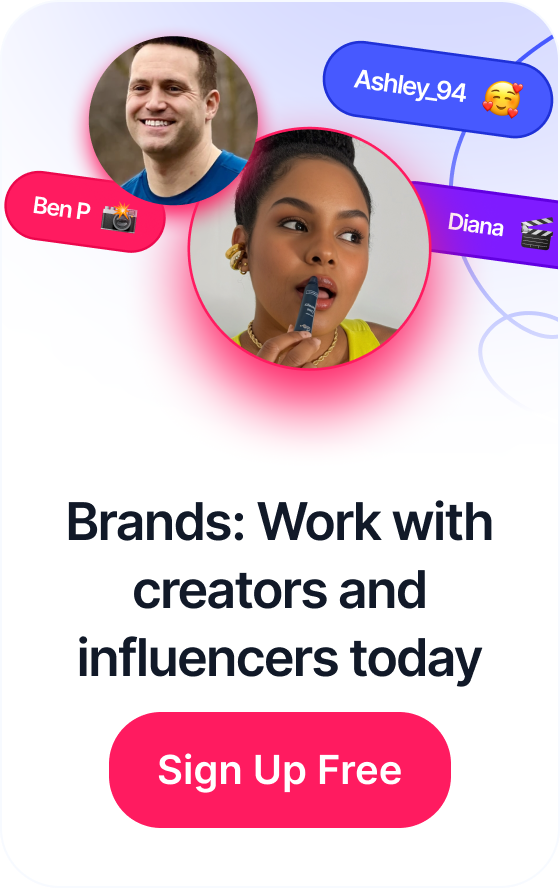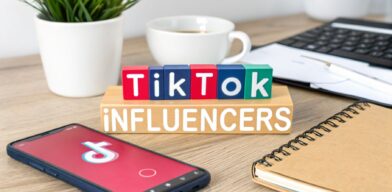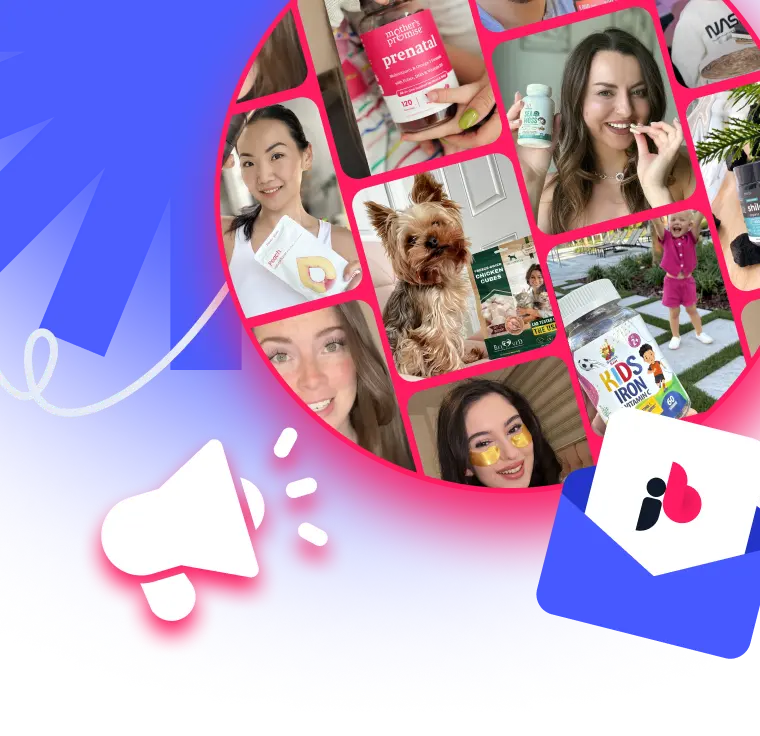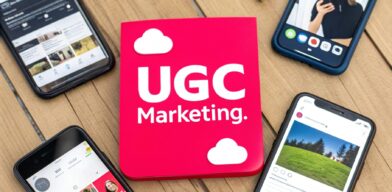 What Is UGC Marketing and How Does It Drive Growth
What Is UGC Marketing and How Does It Drive Growth
To really nail your Amazon influencer search, you have to think beyond the basic keyword grind. The most effective approach I’ve seen combines digging into Amazon’s own creator tools—like Amazon Live and the #FoundItOnAmazon feed—with smart social media sleuthing to find people who’ve already earned the trust of your ideal customers. It’s this two-pronged attack that helps you find partners with both a solid Amazon presence and real, genuine influence.
Table of Contents
Why Amazon Influencers Are Your Next Growth Channel
If you’re still thinking of influencer marketing as just Instagram posts and YouTube videos, you’re missing the biggest shift in e-commerce. The real action is now happening directly on the world’s largest marketplace. Amazon has brilliantly woven creator content right into its shopping experience, completely changing how people discover and buy things. This isn’t just about getting a quick shout-out; it’s about embedding your brand right at the finish line of the customer’s journey.
This move provides a level of authenticity that traditional ads just can’t buy. When a shopper sees a creator they actually follow demonstrating a product in a Shoppable Video or featuring it in their hand-picked Storefront, it’s powerful social proof. And it happens at the most critical moment—right before they click “Add to Cart.”
The Power of On-Platform Trust
What makes the Amazon Influencer Program so effective is how natural it feels. These collaborations come across less like ads and more like helpful recommendations because they live where customers are already searching for products.
Think about it this way:
- Curated Shopping: Influencers basically act as personal shoppers. They slice through the overwhelming noise of millions of products to present a small, trusted selection to their followers.
- Enhanced Credibility: Getting your product on an influencer’s Amazon Storefront is a huge vote of confidence. It instantly builds your brand’s credibility with an audience that already trusts that creator’s taste.
- Authentic Storytelling: Through livestreams and videos, creators can show your product in a real-world setting, answering questions and handling potential objections on the fly.
The real advantage is that you’re reaching motivated buyers, through a trusted voice, on the exact platform where they pull out their credit cards. This synergy is what drives sky-high conversion rates and builds genuine brand loyalty.
The growth here is just staggering. The global influencer marketing industry has absolutely exploded, ballooning from $1.4 billion in 2014 to a projected $32.55 billion by 2025. This massive trend shows a clear shift in marketing spend toward creator-led content. Amazon’s program has tapped right into this by offering influencers direct commissions, and some brands have reported a doubling of their e-commerce conversion rates as a result. For a deeper dive into the numbers behind this boom, check out these Amazon influencer program statistics.
Folding Amazon influencer marketing into your wider essential digital PR strategies can give your brand’s online visibility and authority a serious boost. By working with creators, you’re not just moving inventory; you’re building a narrative and a community right where it counts the most.
You don’t have to look far to find great influencer partners for your Amazon brand. In fact, some of the best collaborators are hiding in plain sight, right on Amazon’s own platform. The trick is knowing where to dig. If you move beyond basic searches, you’ll discover a goldmine of creators who already live and breathe the Amazon ecosystem.
Your first stop should be the most obvious one: the product detail pages. Go to your top competitors’ listings and look for the “Videos for this product” carousel. This is where you’ll find video reviews from regular customers and, more importantly, content from creators in the Amazon Influencer Program. A creator who has already reviewed a similar product is a home run. They know the category, understand what shoppers want to see, and already have an audience that’s interested.
Tapping into Amazon’s Creator Hubs
Once you’ve scoured product pages, it’s time to explore the spaces Amazon built specifically to feature its creators. These hubs are fantastic for finding new talent and seeing who’s already established on the platform.
The #FoundItOnAmazon feed is a great place to start. Think of it like a shoppable Instagram or Pinterest board, curated by creators sharing their favorite finds. You can browse by category, so it’s easy to zero in on your niche, whether that’s home decor or high-tech gadgets. You’ll quickly spot influencers whose style and audience are a perfect match for your brand.
Here’s what the main #FoundItOnAmazon page looks like. It’s organized visually, making it simple to find creators with a strong aesthetic in your market.
Another powerful, and often overlooked, resource is Amazon Live. This is Amazon’s livestreaming platform where creators host interactive shows, demo products in real-time, and chat directly with shoppers. Spending a little time watching streams in your category is like getting a free audition. You get a firsthand look at an influencer’s personality, how they present products, and—most importantly—how they engage with a live audience.
Finding Hidden Gems and Vetting Your Prospects
Sometimes the best partners aren’t the ones with the biggest followings. You can uncover some real hidden gems by looking for high-quality, user-generated content in places most brands ignore.
Make it a habit to systematically check the customer reviews section on the best-selling products in your category. You’re not just looking for 5-star ratings; you’re looking for reviewers who consistently post detailed, well-lit photos or helpful video reviews. These people are often aspiring creators or micro-influencers who are already skilled at making content that sells.
A top customer reviewer with a track record of great photos and videos is basically a pre-vetted candidate. They already know how to create content that speaks to Amazon shoppers and are probably eager for a more official collaboration.
Once you’ve got a list of potential partners, the last step is to do a deep dive into their Amazon Storefront. This is their personal page on Amazon where they curate product recommendations into “Idea Lists.” Don’t just give it a quick scan; really analyze it.
- Niche Focus: Does their storefront have a clear theme, like “Minimalist Home Office” or “Marathon Training Gear,” that aligns with your product? A focused storefront is a huge plus.
- Content Quality: Look at how they organize their lists. Are they thoughtful and well-curated? Do they use high-quality images and catchy, descriptive titles?
- Audience Trust: Check out the products they promote. A healthy mix of price points and brands—not just big names—suggests they are authentic and have earned their audience’s trust.
Putting in this on-platform groundwork is absolutely critical. It ensures you’re not just finding someone with an audience, but a true creator who knows how to drive sales in the unique Amazon environment.
Using Third-Party Tools for a Smarter Search
While you can definitely find some solid talent by poking around Amazon’s own platform, relying solely on it is like fishing with only one type of bait. To get a real competitive edge, you need to expand your search to third-party tools and social media. These external resources open up a world of deeper analytics and give you access to creators you’d never find on Amazon alone.
This is how you build a truly targeted and effective influencer strategy.
This breakdown shows you how different search methods can help you scout influencer profiles like a pro.
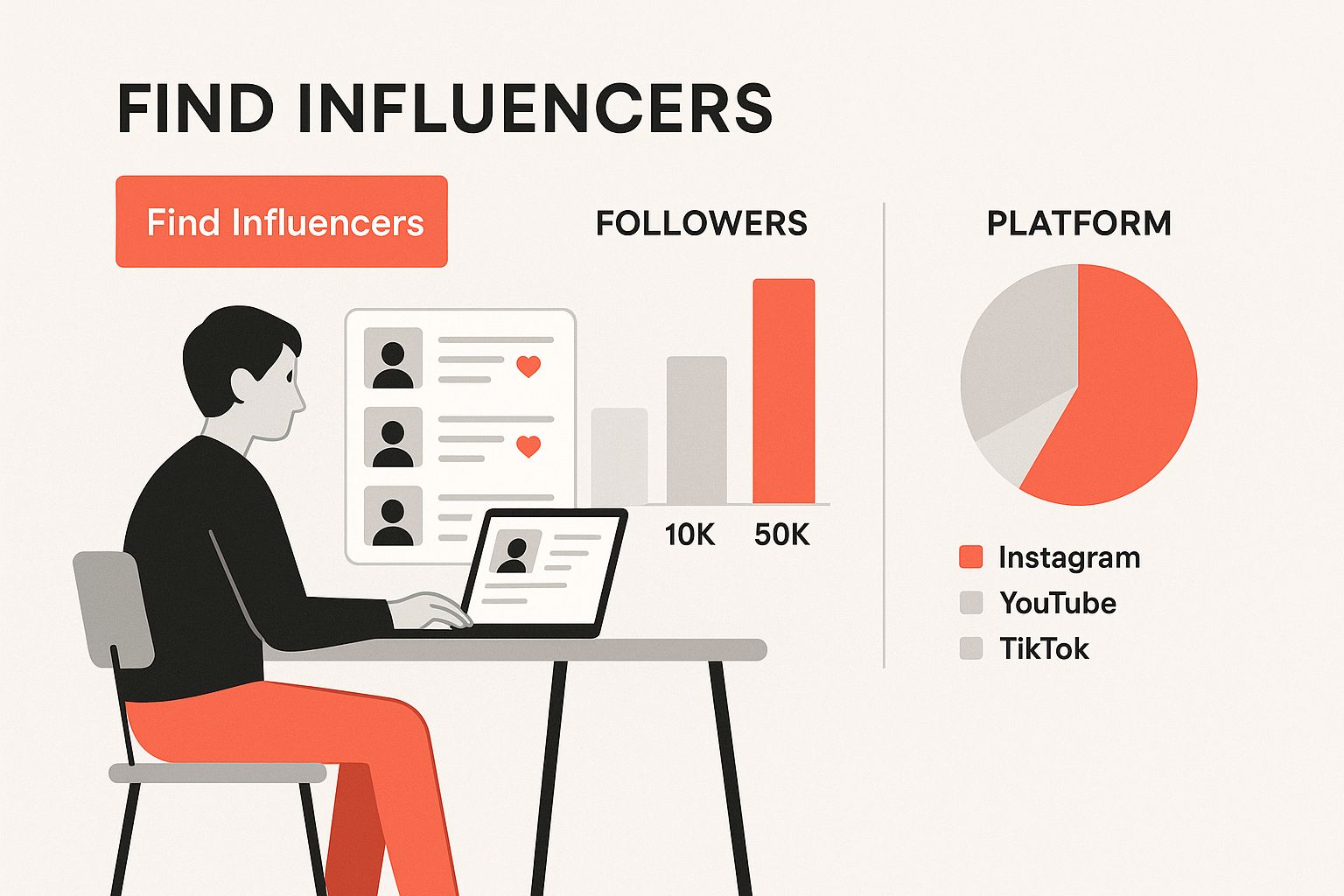
The big takeaway here? A multi-channel approach is king. Combining on-Amazon discovery with searches on social media and specialized tools gives you the most complete picture of potential partners out there.
Prospecting on Social Media Platforms
Major social channels are absolute goldmines for finding creators who are already talking about and promoting Amazon products. The trick is knowing what to look for. Think of hashtags as your best friend—they’re the signposts that lead you straight to relevant creators.
Start your search on platforms like Instagram, TikTok, and YouTube with a few popular, high-volume hashtags. This simple move can uncover hundreds of potential partners almost instantly.
- #AmazonFinds: This is your bread-and-butter tag for general product discovery. It’s a great starting point for any niche.
- #AmazonFashion or #AmazonHome: Get more specific. Using niche tags like these helps you zero in on influencers who are specialists in your market.
- #FoundItOnAmazon: This is Amazon’s official tag, often used by creators who are part of the formal program.
- #TikTokMadeMeBuyIt: A massive, trend-driven tag that frequently showcases viral Amazon products.
Once you spot a creator whose content and vibe match your brand, the next step is to check their bio. Nine times out of ten, active Amazon influencers will have a link to their Amazon Storefront right there, often through a link aggregator. Clicking through to their storefront is the final, crucial step to confirm they’re the real deal.
Leveraging Specialized Search Tools
Social media is fantastic for casting a wide net, but when you need to get surgical, you turn to specialized influencer platforms. These tools are built from the ground up to connect brands with creators, armed with filters and data you just can’t get from a hashtag search. For a truly focused search, using a dedicated Amazon affiliate finder tool can massively cut down the time it takes to pinpoint the right influencers.
The single biggest advantage of using these platforms is efficiency. Forget manually cross-referencing social profiles with Amazon storefronts. You get a curated, pre-vetted database of Amazon creators, complete with the performance metrics that actually matter.
Many of these tools let you drill down and find Amazon influencers based on specific criteria that directly impact sales. You can filter by:
- Product Category: Instantly trim the list to creators who live and breathe your niche.
- Audience Demographics: Make sure their followers are your target customers.
- Engagement Rates: Look past vanity metrics and find influencers with genuinely active, responsive audiences.
- Past Collaborations: See which other brands they’ve worked with. This gives you a great sense of their experience and professional fit.
The best workflow combines both methods. Use social media for initial discovery and creative inspiration. Then, pivot to specialized platforms to vet your top candidates with hard data. This two-pronged attack ensures you find partners who are perfectly aligned with your brand’s goals and ready to drive results.
Comparison of Influencer Search Methods
To help you decide where to focus your efforts, let’s break down the main ways to find Amazon influencers. Each method has its own set of strengths and weaknesses, making them better suited for different stages of your search.
| Method | Pros | Cons | Best For |
|---|---|---|---|
| Amazon’s Native Features | Direct access to on-platform talent; Easy to verify Storefronts | Limited search filters; Time-consuming to scale; No audience data | Finding influencers who are already deeply integrated with Amazon. |
| Social Media Prospecting | Huge pool of diverse creators; Great for spotting trends and authentic content | Manual process; Requires cross-verification; Hard to gauge performance without tools | Initial discovery, creative inspiration, and finding up-and-coming talent. |
| Third-Party Tools | Advanced filters (demographics, engagement); Pre-vetted databases; Scalable and efficient | Can be expensive; May have a learning curve | Vetting candidates with data, running targeted campaigns, and scaling your program efficiently. |
Ultimately, the most successful brands don’t just pick one method; they blend all three. Start broad on social media, verify on Amazon, and then use specialized tools to refine your shortlist and make data-driven decisions.
How To Vet And Partner With The Right Influencers
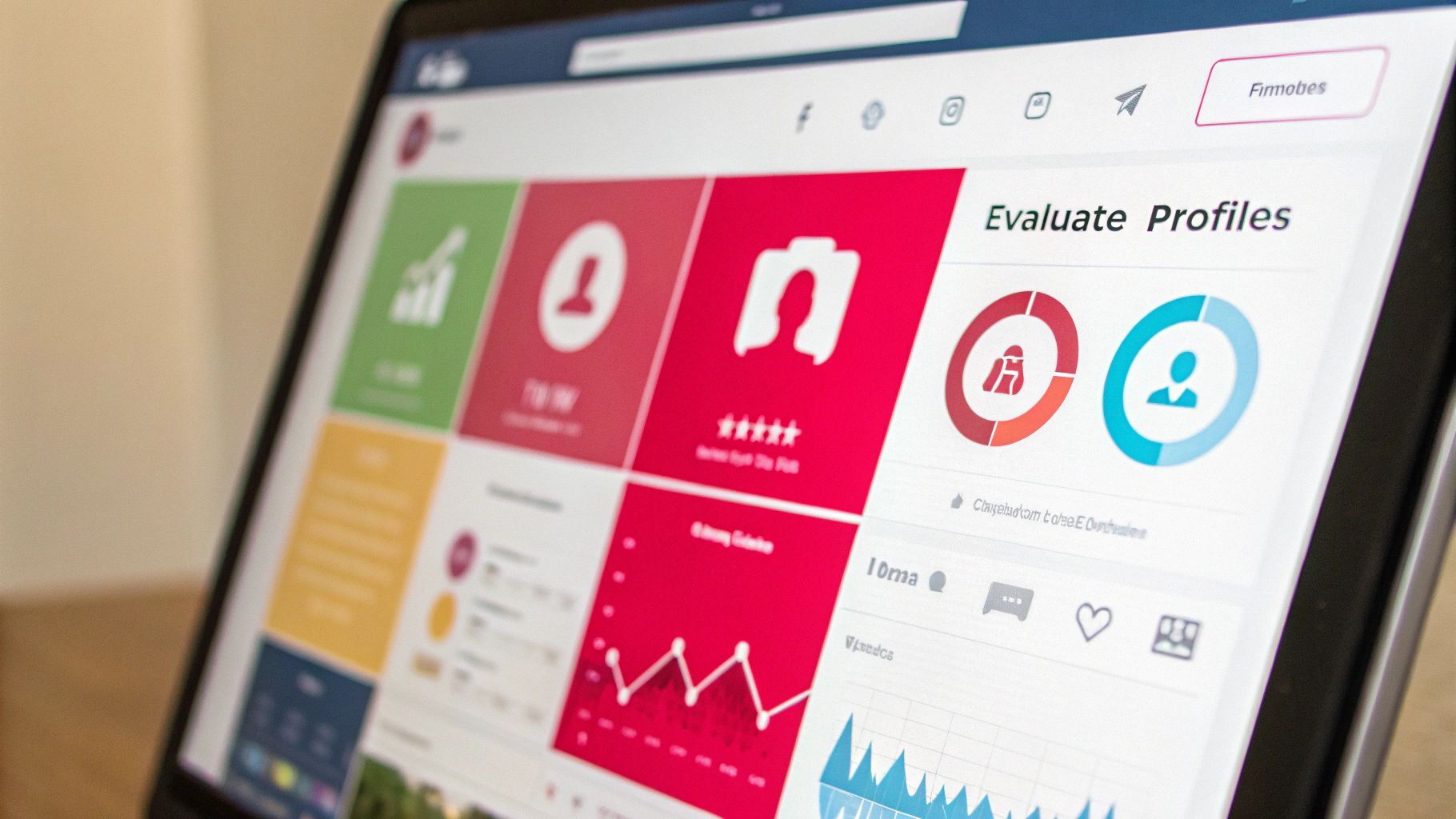
Finding a list of potential Amazon influencers is just the first step. The real work—and where most brands find success—is in picking the right partner. A killer partnership goes way beyond follower counts; it’s about finding a creator whose voice and audience just click with your brand.
Think of this vetting process as your most important quality check. It’s how you tell the difference between creators who can actually move the needle on sales and those who just have big, hollow numbers. A little due diligence here ensures you’re putting your budget into partnerships that deliver a real return.
Analyzing The Influencer’s Storefront And Content
Before you even dream of hitting “send” on a DM, you need to do your homework. Dive deep into the influencer’s work. Their Amazon Storefront is your ground zero and the best place to start. A well-organized, thoughtful storefront is a dead giveaway of a professional and dedicated creator.
Start by looking at their Idea Lists. Are they organized into clear, helpful categories like “Cozy Fall Home Favorites” or “My Skincare Holy Grails”? Or is it just a chaotic dump of random products? The first one shows a creator who gets it—they know how to guide their audience on a shopping journey.
Also, check out the types of products they’re pushing. Is there a good mix of brands and price points, or does it feel like they’re just promoting whatever brand is cutting the biggest check? Authenticity is everything. A creator who promotes a curated selection of products that feel true to their personal brand is far more believable.
Looking Beyond Vanity Metrics
It’s so easy to get wowed by a massive follower count, but engagement is the metric that truly matters. I’d take an influencer with 10,000 highly engaged followers over one with 100,000 silent ones any day of the week. The comment section on their social media posts is a goldmine for this kind of intel.
Here’s what you should be looking for:
- Real Conversations: Are people asking legit questions about the products? More importantly, is the influencer actually taking the time to write back thoughtful responses? That back-and-forth is the sign of a healthy, connected community.
- Audience Vibe: Read the comments. Are they genuinely positive and excited? Do you see people tagging their friends? This is what it looks like when an audience trusts an influencer’s taste.
- Red Flags: Be suspicious if the comments are all generic, one-word replies like “Cool!” or “Nice!”. This can be a sign of low-quality, or even worse, purchased engagement.
The heart of any great collaboration is trust. An influencer’s genuine connection with their audience is the single most valuable asset they bring to your brand. It’s the magic that turns their followers into your customers.
This trust is non-negotiable. It’s the whole reason this works. Consumers around the world trust creators with real audience connections way more than they trust traditional ads. When an influencer shares a real, authentic experience with a product on Instagram or TikTok, they’re effectively giving your brand a warm introduction to thousands of engaged followers.
The proof is in the numbers. Over 55% of social media users have bought something on Amazon because a creator recommended it. You can learn more about how this trust shapes buying habits in this deep dive on finding Amazon influencers.
Crafting Your Outreach And Structuring The Deal
Once you’ve found an influencer who feels like a perfect fit, it’s time to reach out. After finding their contact information through reliable channels, your first message has to be personal and professional. Seriously, avoid generic, copy-pasted templates at all costs. Mention a specific video or Idea List of theirs that you genuinely liked—it proves you’ve actually done your homework.
When the conversation turns to money, be ready to talk about a few different compensation models. A lot of Amazon influencers earn a commission (anywhere from 1% to 20%) directly from Amazon on sales they drive. But don’t be surprised if they also require an upfront fee for creating the content, especially for dedicated videos or a prime spot in a popular list.
Often, the best approach is a hybrid model that combines a flat fee with performance-based commissions. It’s usually the fairest structure and keeps both sides motivated.
Get Creative to Squeeze More ROI From Your Influencers
Just getting an influencer to agree to a partnership is only the first step. The real work—and the real payoff—comes from how you structure the collaboration. If you just settle for a basic product feature, you’re leaving a ton of money on the table.
One of the easiest wins right out of the gate is using influencer-exclusive promo codes. They’re not just a simple way to drive sales; they give you crystal-clear, trackable attribution. When an influencer drops a unique, limited-time code like “SARA15,” it immediately lights a fire under their audience to buy now.
This direct-response approach is also a goldmine of data. You can instantly see which creators are actually moving the needle, which tells you exactly where to double down on your investment for future campaigns.
Think Beyond a Single Product Post
Want to bump up your average order value (AOV)? Stop thinking about single product promotions and start creating bundles. Work with your influencer to put together an “Amazon Favorites” kit that features your product alongside other complementary items they genuinely use and recommend.
This strategy reframes your product from a standalone item into a key piece of a desirable lifestyle. For example, a fitness influencer could bundle your resistance bands with their go-to yoga mat and water bottle. Suddenly, your product’s perceived value skyrockets because it’s part of a complete solution.
Another killer tactic is running giveaways and contests through the influencer. These are absolute dynamite for boosting engagement and growing your audience fast. You can set the entry requirements to match your specific goals:
- Follow your brand’s social media pages.
- Tag a few friends in the comments (hello, free reach!).
- Sign up for your email list to capture leads.
Squeeze Every Drop Out of Your Content
The content an influencer creates for you is a high-value asset. Don’t let it just post once and fade away. The smartest brands I know repurpose their influencer content across every channel imaginable. A single great video can be sliced, diced, and served up in a dozen different ways.
An influencer’s authentic video review or demonstration is gold. By repurposing it, you extend its lifespan and impact, getting more mileage out of your initial investment and reinforcing your message across different platforms.
Just think about the possibilities from one video:
- The full-length version can live on their YouTube channel and be embedded directly on your Amazon product detail page.
- A punchy, 60-second cut becomes a perfect Instagram Reel or TikTok video.
- Even shorter, 15-second clips are ideal for YouTube Shorts or as creative for your paid social media ads.
This multi-channel approach guarantees you’re hitting different parts of your audience right where they hang out. To really get a handle on what works, it’s always a good idea to study a few successful influencer marketing campaigns to see how the pros do it.
Heading into 2025, sellers are getting much smarter about using these cost-effective strategies to drive real sales. Combining promo codes, creative bundles, and a savvy content repurposing plan is no longer a “nice to have”—it’s becoming standard practice for any brand serious about growth.
Got questions about working with Amazon influencers? You’re not alone. Diving into this world can feel a bit murky at first, but figuring out the essentials beforehand will help you build smarter partnerships and dodge those all-too-common missteps. Let’s clear the air on a few things brands always ask about.
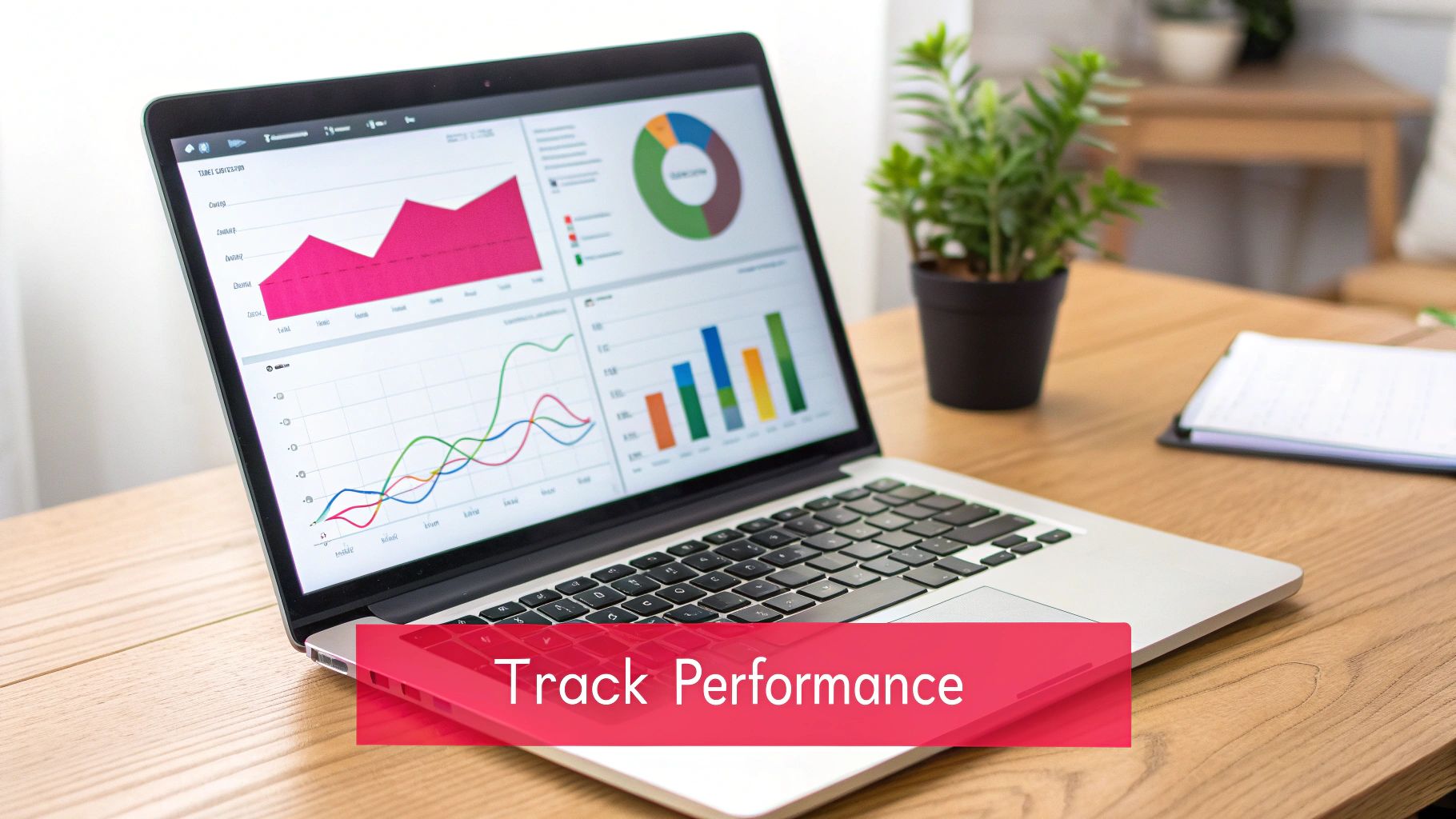
The biggest question that always comes up is money. How do influencers get paid? While some big-name creators might ask for a flat fee for their work, most partnerships are built on commissions. Amazon handles all of this on the backend, giving influencers a cut of the sales they generate. This commission can be anywhere from 1% to 20%, depending on the product category.
This performance-based model is really the engine of the whole program. It gives creators a real incentive to promote products their audience will actually love and buy.
Influencer vs. Affiliate: What’s the Real Difference?
I hear people use “Amazon Influencer” and “Amazon Affiliate” as if they’re the same thing, but they’re actually two different programs. Knowing the difference is crucial when you’re figuring out how to find influencers on Amazon.
An Amazon Affiliate is pretty much anyone who signs up to get special links to earn commissions. It’s an open-door program—if you have a blog, an email list, or a social media account, you can become an affiliate and share links.
The Amazon Influencer Program, however, is a bit more exclusive. Think of it as a VIP section of the affiliate program, specifically for creators who already have a solid following on social media.
The game-changer here is the Amazon Storefront. Only approved influencers get their own custom, shoppable page on Amazon (like amazon.com/shop/influencername). This is where they curate lists of their favorite products, and it’s a powerful tool that standard affiliates just don’t get.
This matters because when you’re looking for a partner, you’re usually not just looking for someone to drop a link. You’re looking for that curated, trusted presence that a storefront provides.
Tracking Campaign ROI and Success
So you’ve partnered with an influencer. How do you know if it’s actually moving the needle? Measuring your return on investment is non-negotiable, and luckily, Amazon gives you some solid tools to do it.
Your best bet is to use Amazon Attribution. This is Amazon’s in-house measurement tool that lets you see the sales and conversion data that comes directly from your off-Amazon marketing, including your influencer campaigns.
Here’s how you can track what’s working:
- Attribution Tags: You can generate a unique tracking link through Amazon Attribution and give it to your influencer. This will unlock detailed analytics on clicks, detail page views, add-to-carts, and most importantly, sales.
- Unique Promo Codes: As we’ve touched on, creating a special discount code just for an influencer (e.g., “CHLOE20”) is a dead-simple way to see exactly how many sales they’re driving.
When you use these methods together, you get a crystal-clear, data-driven view of which partnerships are bringing real value to your brand. It lets you double down on your winners and fine-tune your strategy over time.
Ready to stop searching and start connecting? JoinBrands offers an all-in-one platform to find and manage relationships with over 250,000 vetted creators, including top Amazon influencers. Streamline your entire workflow—from campaign creation to content approval—and find the perfect partners to amplify your sales today. Discover your next great collaboration at https://joinbrands.com.
